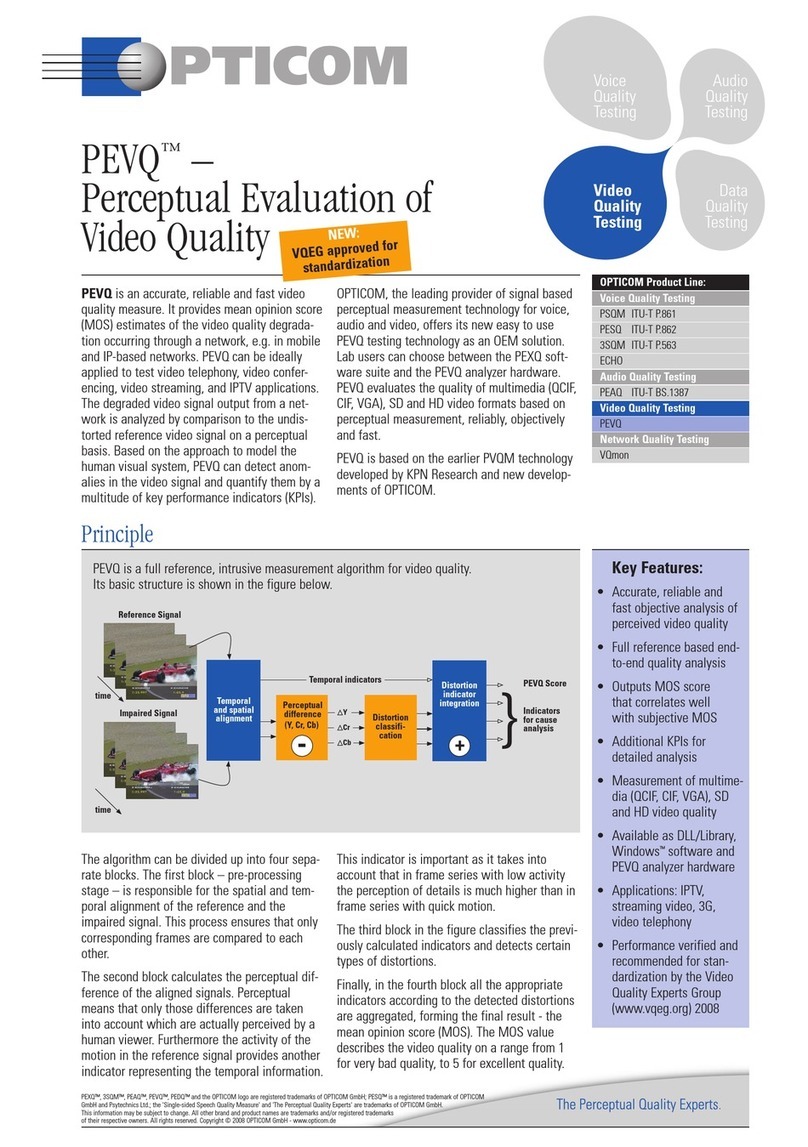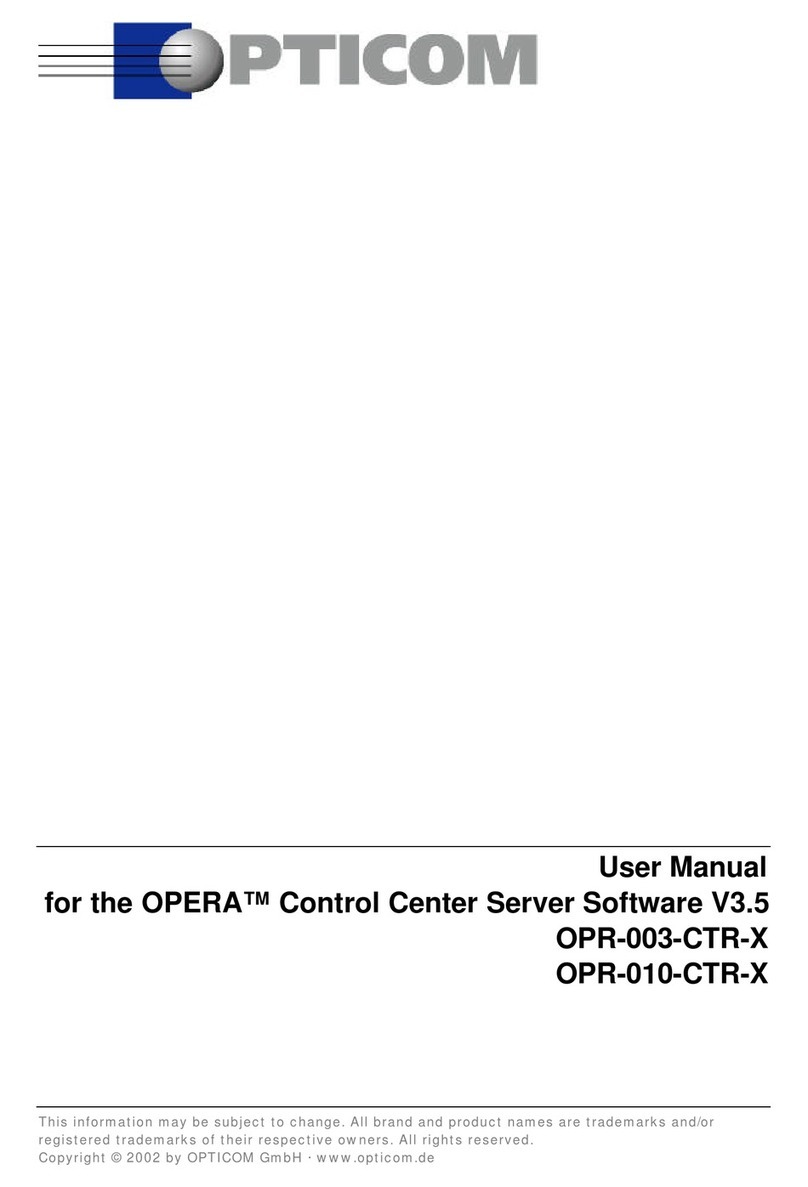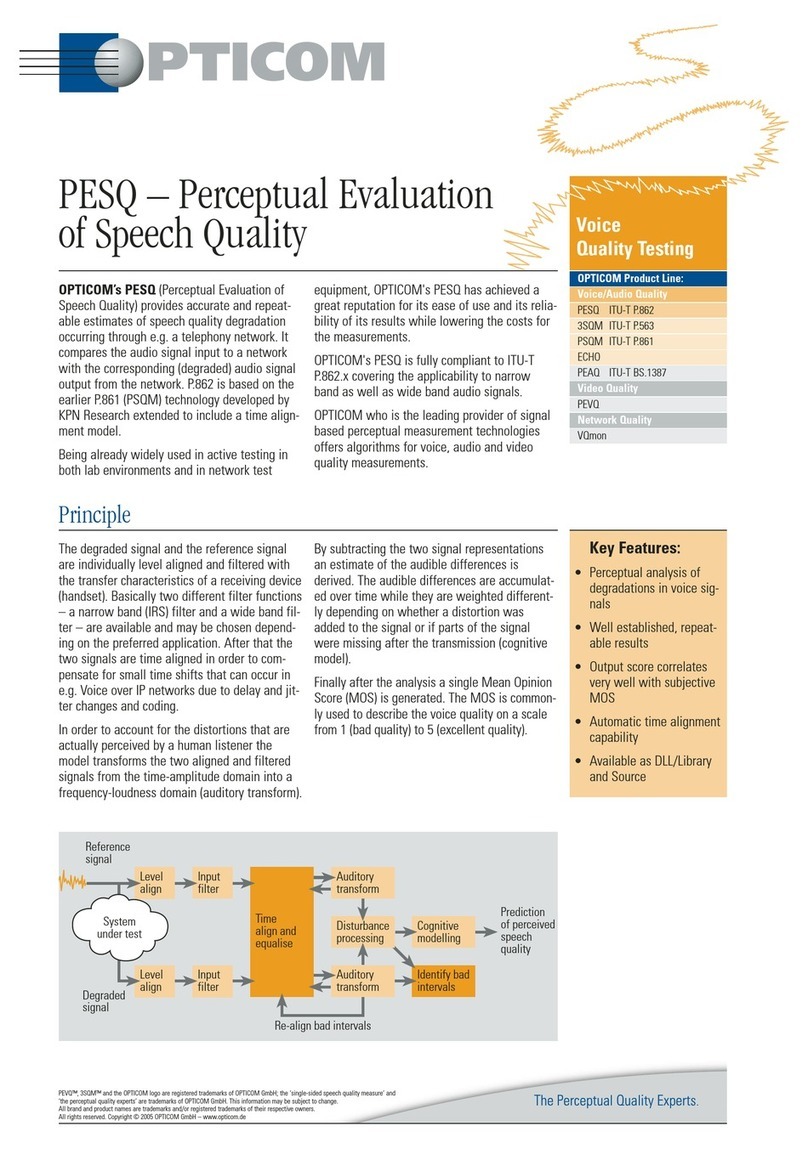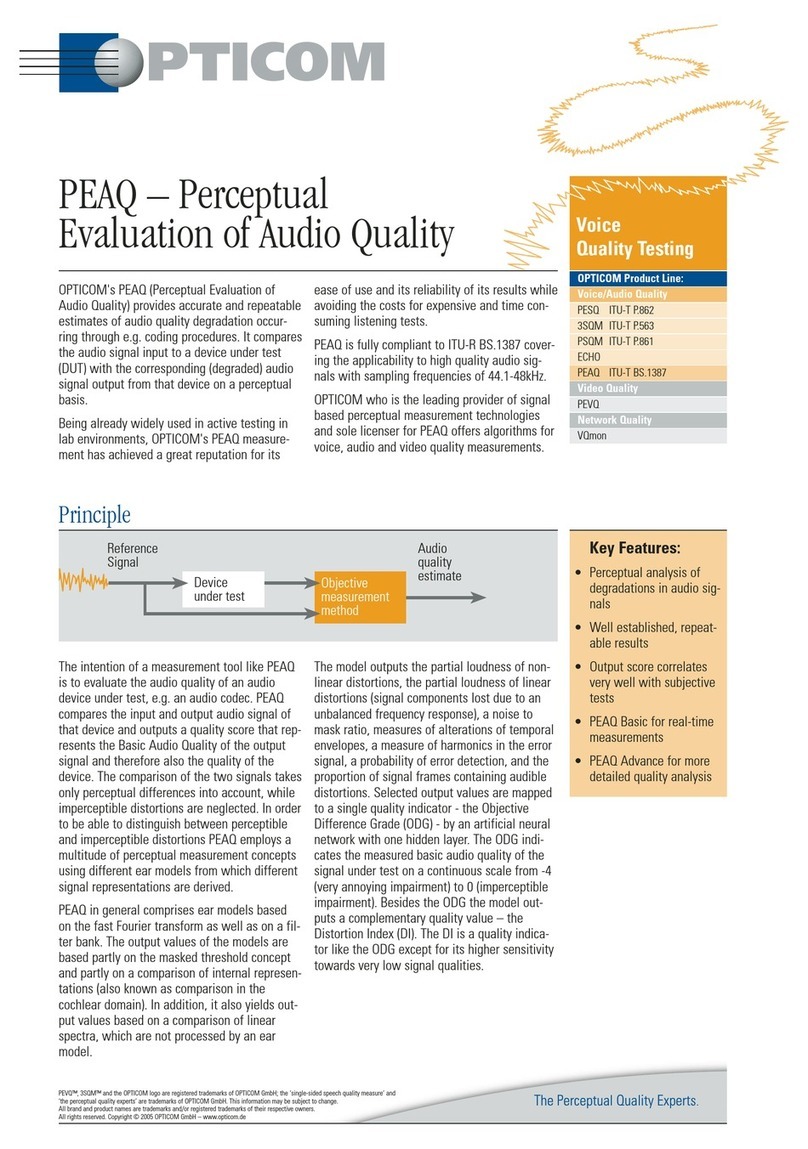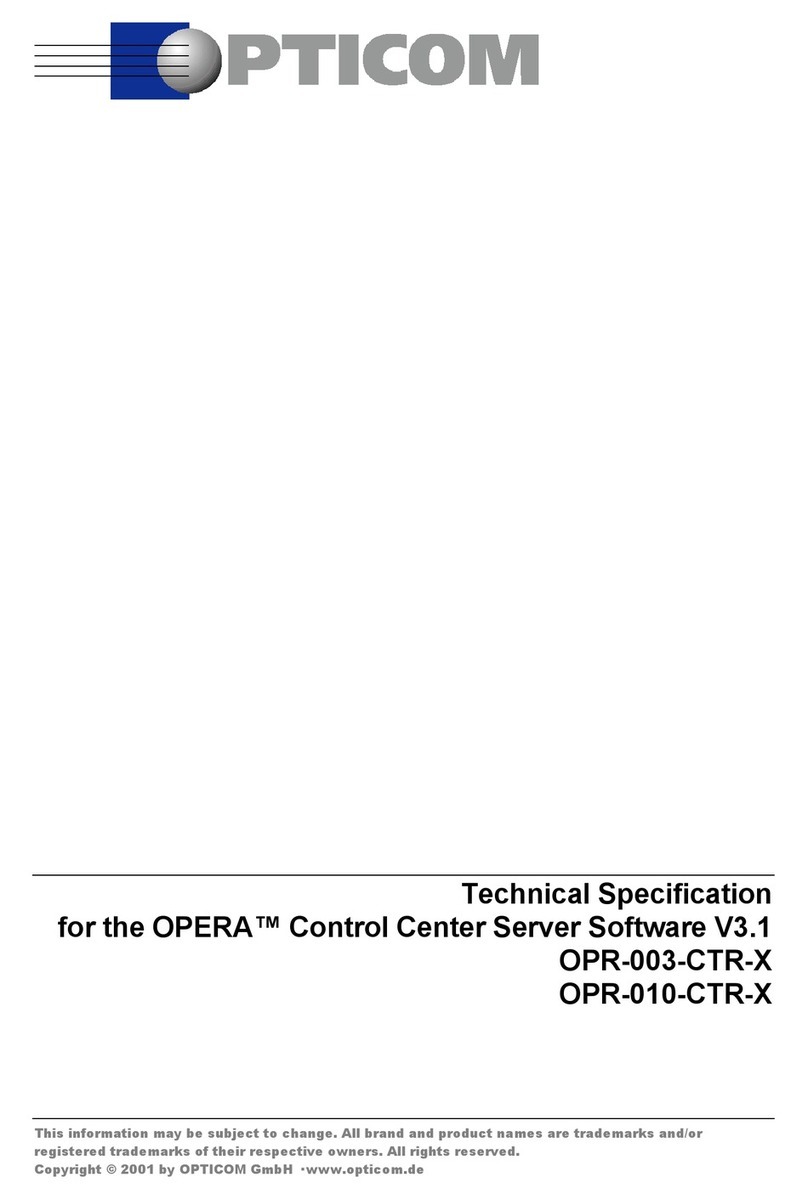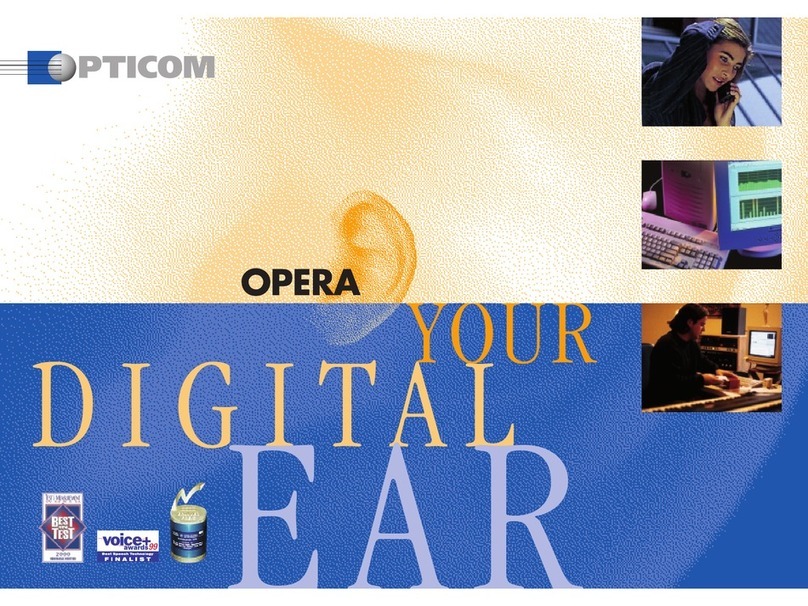TECHNICAL SPECIFICATION FOR THE OPERA™ SOFTWARE SUITE V3.0
7
Sound file formats: WAVE-files containing A-law, mu-law, linear PCM (8 or 16
bit)
Max. duration of measurement signals: As defined by WAVE-format
Gain Compensation: Maximum gain difference = ±60 dB
Automatic Delay Compensation: ±1000 ms (File-based measurements),
±500 ms (On-line measurements)
Static Delay: Automatic Delay Compensation ±10 s
Delay Tracking: ±512 samples
Automated operation: Supported
Available Measurement Results: Timesignal,
Spectrum,
Excitation,
Noise-to-Mask Ratio (NMR), averaged,
Noise-to-Mask Ratio (NMR) vs. Time,
Masked Threshold,
Loudness,
Objective Difference Grade (ODG), averaged (Advanced and
Basic Version),
Objective Difference Grade (ODG) vs. Time,
Distortion Index (DI), for the Advanced and the Basic Version,
Delay between the Reference Signal and the output signal of
the device under test,
Attenuation of the test signal compared to the reference
signal,
Modulation of the reference and test signal
BS.1387 intermediate results (MOVs): Average Bandwidth of the Reference Signal (AvgBwRef),
Average Bandwidth of the output signal of the device under
test (AvgBwTst),
Total Noise-to-Mask Ratio (NMRtotB),
Relative fraction of frames for which at last one frequency
band contains a significant noise component (RDF),
Average Distorted Block (=Frame), taken as the logarithm of
the ratio of the total distortion to the total number of severely
distorted frames (ADB),
Maximum of the Probability of Detection after low pass
filtering (MFPD),
Harmonic structure of the error over time (EHS),
Windowed averaged difference in modulation (envelopes)
between Reference Signal and Signal Under Test
(WinModDif1B),
Averaged modulation difference (AModDif1B),
Averaged modulation difference with emphasis on introduced
modulations and modulation changes where the reference
contains little or no modulations (AmodDif2B, RModDifA),
RMS value of the averaged noise loudness with emphasis on
introduced components (NloudB, NLA),
Averaged Linear Distortions (ALD)












